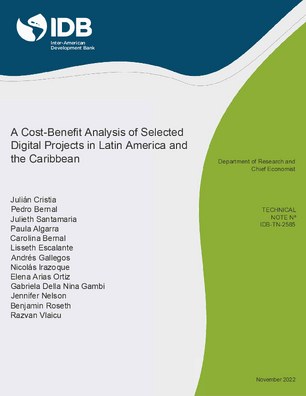A Cost-Benefit Analysis of Selected Digital Projects in Latin America and the Caribbean
Date
Nov 2022
The increase in access to digital technologies is opening up opportunities for governments in Latin America and the Caribbean to offer digital public services. However, there is scarce evidence regarding the benefits and costs of potential projects which makes it difficult for governments in the region to prioritize digital projects for implementation. As part of the report titled “Digitalizing Public Services: Opportunities for Latin America and the Caribbean,” produced by the Inter-American Development Bank (Cristia and Vlaicu, 2022), a set of cost-benefit analyses of the digital public services were performed. The present document complements the mentioned report by presenting the methodology, assumptions, and results of these cost-benefit analyses. To increase the comparability of the results across digital public services evaluated, common assumptions and a standardized methodology were used. Moreover, contextual conditions were fixed across projects by estimating results for a base country, Peru. The robustness of the results were examined by replicating the analysis for Chile, El Salvador, and Jamaica. Digital public services were evaluated in three sectors: education, health and government administrative services (e.g. production of identity cards). For each sector, the benefits and costs of two digital projects were estimated. For some these digital projects, only one policy option was assessed but, in other cases, several policy options were analyzed. A total of 11 policy options were assessed as part of this exercise. Results indicate that, in general, the policy options analyzed produced positive net present values. However, there is wide variation in the net present value across policy options suggesting that governments should carefully evaluate which digital public services they should prioritize for implementation.




